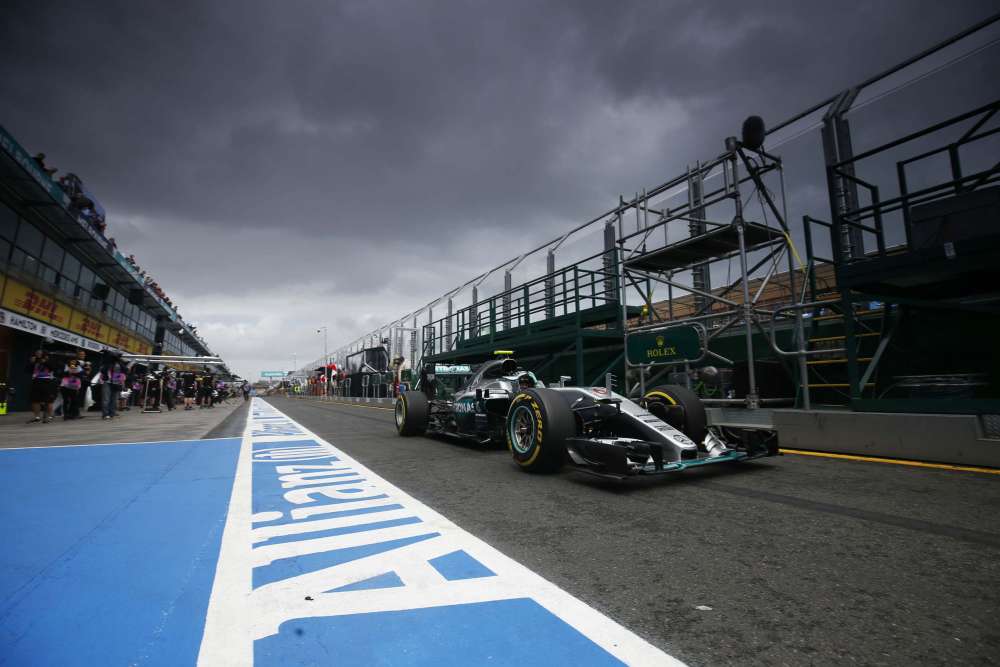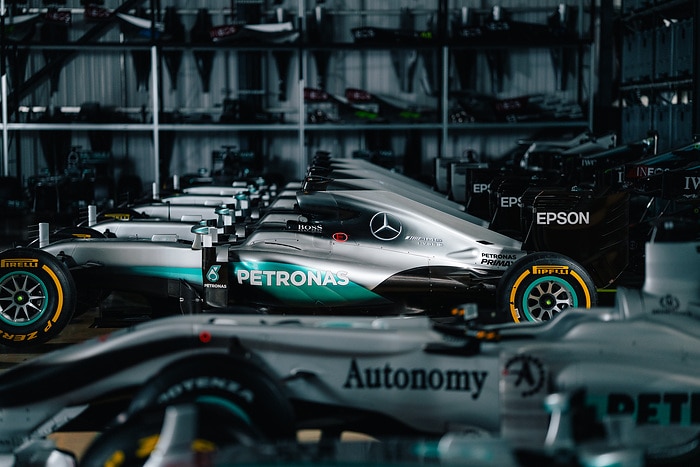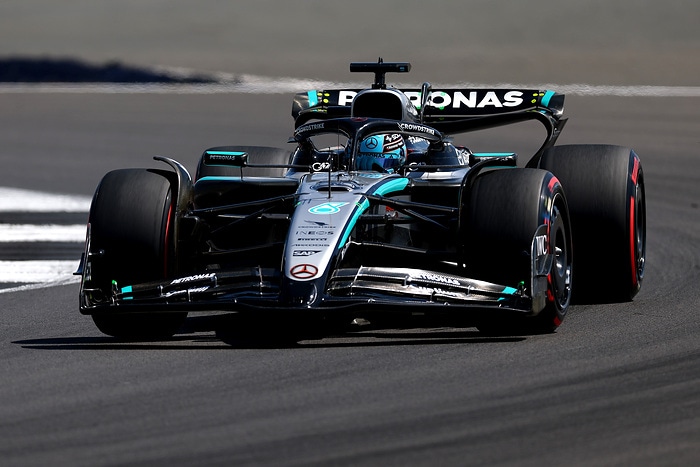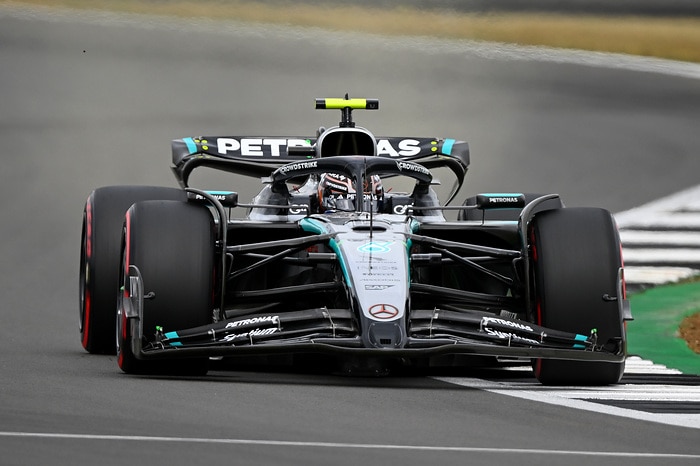
The 2016 Formula One World Championship continues this weekend with Round Two, the Bahrain Grand Prix, from the Bahrain International Circuit
Lewis: “I have a good feeling about my pace”
Nico: “The aim is to come out on top at every step”
Toto: “We expect even smaller gaps and a very close match this weekend”
Paddy: “We could see a few surprises”
Lewis Hamilton
I’m excited at the thought of more races like Melbourne. There are going to be weekends where we’re a few seconds up the road from Ferrari, races where it’s wheel to wheel and races where they might be ahead. We really don’t know – and that’s exciting. I have a good feeling about my pace. I was ahead all weekend until the race start last time out, so I’m confident heading to Bahrain. It’s been entertaining on track for the past two seasons there, so more of the same would be great! There’s been a lot of talk about the rules and whether the drivers should be more involved in decision making. It’s not our job to come up with ideas and we all have different opinions anyway. But personally, I think we need more mechanical grip and less aero wake coming off the back of the cars so we can get close and overtake. Give us five seconds’ worth of lap time from aero and nothing will change – we’ll just be driving faster. I speak as somebody who loves this sport and loves racing. I don’t have all the answers – but I know that the changes we’re making won’t deliver better racing.
Nico Rosberg
We’ve stepped up our game once again with a fantastic car. But Ferrari were a real threat all weekend in Melbourne and it’s clear that we’ve got a big battle on our hands, so we have to keep pushing very hard. The new radio rules make things quite a big challenge. It’s tough out there – and for me it’s a good direction we’ve taken, giving the drivers more responsibility. The important thing is whether it’s what the fans want to see, so we need to listen to them. It’s Bahrain next – a track which always seems to provide entertainment for me! I’ve had some great battles there in the last two years with Lewis and also the Ferraris, so I’m expecting more of the same this time and very much looking forward to that. It was great to win the first race – but the aim is to come out on top at every step of the way this season, starting this weekend. There’s a long way to go…
Toto Wolff, Head of Mercedes-Benz Motorsport
We have made a solid start to the season. However, while our advantage in Melbourne was a healthy one, it was nevertheless close enough that those bad starts could easily have lost us the race. Bahrain is a track that should suit Ferrari, so we expect even smaller gaps and a very close match this weekend. After a successful debut for the new tyre regulations last time out, we can also expect an interesting strategy battle during the race – so there is plenty to look forward to. This weekend we will see the new qualifying system continue after a less-than-impressive debut in Australia. The teams were unanimous in their opinion of it on Sunday in Melbourne and it wasn’t a positive opinion. We haven’t found the right format with this change and it’s hard to see how it might be more entertaining for the fans this weekend in Bahrain. The sport is under scrutiny on this matter, so careful thought is required in order to make coordinated, intelligent steps forward from the position we are in right now. The fans want close racing, in a format they can understand, between the best drivers and cars in the world – in that order. We should be capable of delivering that to the people in the grandstands and watching around the world.
Paddy Lowe, Executive Director (Technical)
Bahrain is quite a different track to Melbourne, so it will be interesting to see how we fare. One thing you can normally guarantee is that it will be dry. Unlike the rain-hit Melbourne weekend, this will provide plenty of opportunity for track time. Thanks to their evening timings, qualifying and the race in Bahrain see much cooler track temperatures than the mid-afternoon FP1 / FP3 sessions – making the latter somewhat unrepresentative. This potentially makes tyre selection even more of a factor. We know already that there is a marked difference between the allocations selected by competing teams for this race, so we could see a few surprises. A big positive from Melbourne was seeing how well the new tyre rules delivered in terms of strategy variation – and we expect to see more of the same here. We’ve seen close battles throughout the field in both years of twilight racing in Bahrain, so we look forward to hopefully providing another spectacular evening for the fans.
Featured this Week: 2016 Tyre Allocation Regulations
When revised regulations governing race weekend tyre allocations were announced for the 2016 season, it’s fair to say that there was a reasonable degree of head scratching among both pundits and fans as to just how the new system would work. However, now the dust has settled from the opening race of the year in Melbourne, two things have become clear: first, that this latest tweak to the rules is not as complex in reality as it seems on paper; second, that it’s working…
Why does making a third tyre compound available lead to greater strategic variation?
It’s simple maths. If you pick three numbers, the quantity of different combinations in which they can be arranged is notably greater than if you had two to choose from. Likewise, having three tyres compounds available to each team over a race weekend has opened up two or three viable additional strategy options.
Did the availability of a third tyre compound have an effect on the race in Melbourne?
At the 2015 Australian Grand Prix, every driver was pushed into running a one-stop strategy – starting on the soft and finishing on the medium. And, had the same tyre choices been available in 2016, they would likely have done the same. The difference this year was that teams had the scope to run two or three different strategies that could potentially converge into a roughly similar solution at the end of the race, resulting in an interesting and unpredictable mix of one and two-stoppers. Even without the red flag, it would have been a very entertaining race.
What was the impact on the racing?
Melbourne saw more overtaking than in previous years – 40 overtakes compared to 13 in 2015 – and this is down in no small part to the new tyre regulations. At other circuits where it’s tough to pass such as Barcelona, Monaco, Budapest or Singapore, track position will again become potentially less of a factor. With three compounds, the difference between the tyres can now create overtaking scenarios.
Was Melbourne a one-off or will this trend continue at other circuits?
There are already signs that more options will open up strategy-wise at the next race in Bahrain – and China looks set to be yet more exciting again. It will create exciting races where one strategy initially appears better than the other – but then that could flip. Whether more cars choose to run one, two or three stops is not important. What creates variation and excitement is that offset strategies are now perfectly valid potential race-winning options, leading to more overtaking and more unknowns towards the end of the race.
Of course, there’s a fine line between interesting strategic differences and chaos. If teams had free choice of compounds for every race, there would be potential for someone to seriously distort the competitive order. The current concept, however, appears to have found the right balance between exciting but understandable racing.
What do the teams make of the change?
Pirelli have created a compound range that promotes excitement if deployed and promoted in the right way. The world wants to see teams and drivers trying to do things differently, and these regulations empower them to do so. Tyres are now a positive talking point before a race weekend. For example, the difference in Bahrain compound nominations between the Silver Arrows and Ferrari has attracted plenty of attention. What’s more, by bringing softer compounds to each event, the target of making the cars faster has already been achieved in large part. In qualifying, lap times will now be close to circuit records in the manner we saw in Melbourne. The current cars possess historic highs of chassis and engine performance – and this is now being translated into the headline times.
Is there room for improvement?As is to be expected, there are a couple of teething problems. For example, teams were asked to nominate their compound choices for a different set of regulations to those under which the sport is now operating for qualifying. But this is a minor complaint. Arguably, the change to the tyre rules has had more of an effect than any other in recent memory. The vast majority of people appear rather excited about its impact – and long may that continue.






















